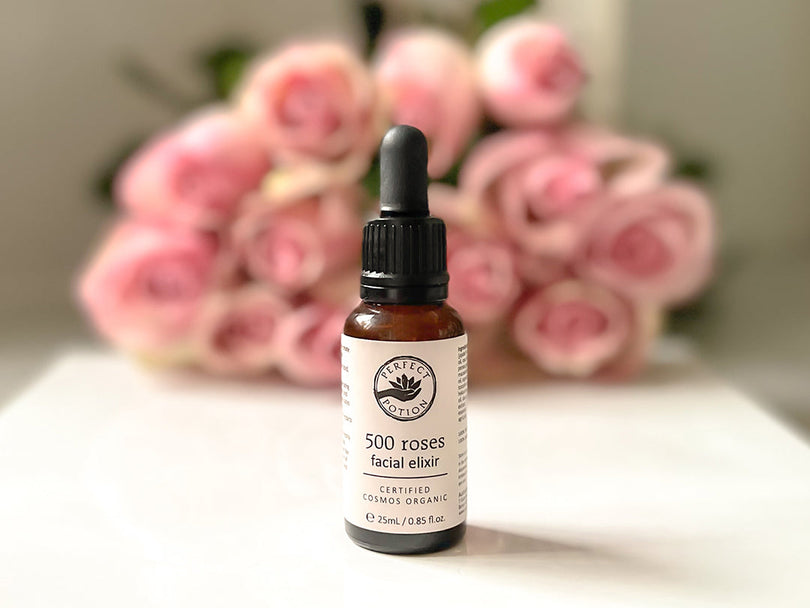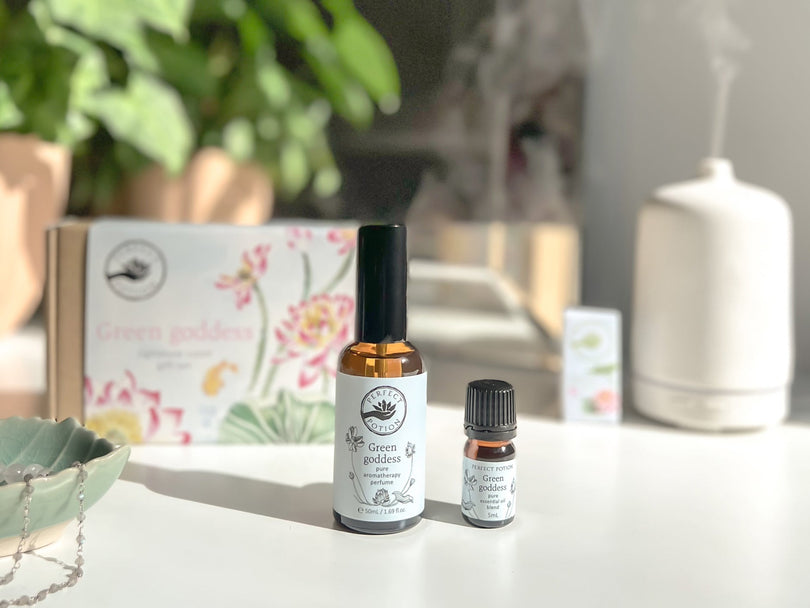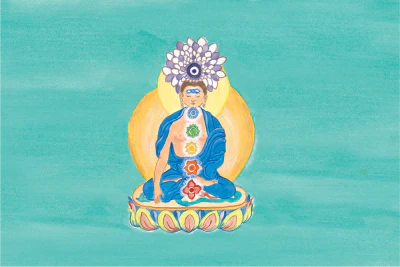
The poses for this chakra yoga series have been selected, presented and explained by Marzena Skowronska, a friend of Perfect Potion, passionate yoga teacher and Reiki practitioner. Marzena is the poet behind the beautiful Chakra poems in Sal’s book Aromatherapy and Chakras. Marzena also wrote the poetic affirmations for each pose in this series.To connect with Marzena visit her website www.MarzenaSkowronska.com or Instagram account @myyogarhythm.
Important note: Please practice yoga respecting your body. If you have any injuries or pre-existing conditions, please make sure you respect the limitations of your body and avoid any poses that may aggravate your condition. My teaching serves as a guidance, but I cannot take responsibility for your practice and outcomes of your practice. In fact, you become your most empowered self when you realise all the benefits and consequences of the practice are a direct result of your own work. Please remember, yoga is meant to nourish us, not deplete.
Chakras, Yoga and Subtle Aromatherapy
We are all energetic beings in an energetic universe.
However, sometimes the vibrations of our body fall a little out of tune when we experience physical or emotional stress. Chakra healing focuses on the seven energetic, life-force centres in our bodies (chakras): a philosophy originating from ancient, esoteric Tantric Indian practises. By balancing our chakras, we realign and restore the body, mind and spirit to harmonic vibrational resonance – allowing us to self-heal, unleash our potential and live a life of vibrant wellness.
Similarly, subtle aromatherapy focuses on the vibrational aspect of essential oils and how it affects our aura and subtle body. Each pure essential oil resonates on a different vibrational attunement, which aligns and corresponds with the seven energetic frequencies of the chakras. This allows us to combine aromatherapy with chakra healing to form a new holistic framework to elevate our wellness.
To enhance this concept even further, we’ve merged subtle aromatherapy and energy healing with a yoga flow mindfully designed to open up each chakra, to create a ritual that brings alignment in body, mind and spirit.
Creating a Chakra Balancing Aroma-Yoga Ritual
What You Need:
- An Open Space
- A Yoga Mat
- Chakra Essential Oil Blend Kit or Chakra Balancing Blend
- A Diffuser
- Chakra Balancing Mist
Begin by creating your sacred space.
Lay down your mat and mist the space with our Chakra Balancing Mist.
Mist over your crown and inhale deeply, breathing in the divine aroma with awareness and attentiveness.
After a few inhalations, set up your space in a way that fully immerses you in your wellness practice.
Perhaps for you this is creating a lush forest with houseplants, or the pink glow of a Himalayan salt lamp.
Set up your diffuser and decide which chakra you would like to focus on.
Diffuse your chosen Perfect Potion Chakra Essential Oil Blend, and if you wish, anoint your body with a dilution of the blend – read how to anoint your body safely in our guide.
Settle in, and you are ready to begin!

Yin yoga is a slow-paced style of yoga that focuses on our ligaments, joints, fascias and even bones. Those yin tissues are not elastic like muscles, but plastic and therefore require more gentle and longer periods of time to be stimulated to grow stronger.
Yin yoga, as in fact any yoga practice, is a wonderful way to get to know ourselves, our patterns, tendencies and habitual reactions. Our yoga mat can be treated as a lab where by using the poses as challenges applied in a controlled environment, we learn about our reactions to them. This creates a space to become an observer of the reaction, rather than be the one who reacts. With that new perspective, we become conscious of our habitual ways of being. Next, we can assess if we like our behaviour or not, and whether it helps us to achieve our goals and live a fulfilling life. If for any reason we don’t like what we see, we have a choice to change it. However, until we become aware, we are unaware and therefore run by unconscious programs, and we may even identify them as being us. The new insights that we receive on the yoga mat are not only helping us to improve our practice, but are transferable into our everyday life. In fact, that is the true goal of yoga. It is not about perfecting a pose, but becoming a conscious creator of our reality. This is something we do with every thought that we think, every word that we say, every action we take. If we do it from a place of conscious choice of the thought, word and action, then we are empowered creators.
There are 3 principles when it comes to practicing yin yoga:
- Find your expression of the pose, i.e. find your edge knowing that your body will go deeper within the time you stay in the pose. Do not push yourself too far to start with, rather allow the body to open as you keep surrendering into the pose.
- Once you have found your pose, make a commitment to stay still. If we move muscles, we prevent the joints from receiving a deep stretch. Use your breath as your companion to ride the waves of thoughts and urges to fidget. However, make sure you come out of the pose if you experience sharp pain or any other signal that tells you it may not be good for you. Trust your intuition.
- Hold the pose for time. General principle is to hold a yin yoga pose for 3 to 5 minutes. Breathe in and out through the nose.
Another very important part of yin yoga practice is the rest we need to take after each pose. It is called a rebound. We must be very mindful to come out slowly and with awareness from a yin yoga pose and immediately take time to allow the body to integrate the working of the pose. We cannot rush. Yin yoga practice helps us to not only develop mindfulness and awareness, but also provides a space to practice patience and surrender.
“Yin yoga is not meant to be comfortable; it will take you well outside your comfort zone. Much of the benefit of this practice will come from staying in this zone of discomfort, despite the mind’s urgent pleas to leave. This, too, is part of the practice” - The Complete Guide to Yin Yoga by Bernie Clark.
 Why this pose:
Why this pose:
Squat is a great pose for balancing Base Chakra because the pose activates perineum, the physical location of the chakra, connects us with Earth element by having our feet planted on the ground and also has grounding and calming quality as it taps into downward-flowing energy known in yoga as apana-vayu. Squad helps with relieving back pain. On a metaphysical level, back pain can be a symptom of feeling unsupported in life, i.e. not having sufficient means as well as not belonging or not being supported by others.

Pose tips:
Stand with your feet hip-width apart. Squat down. Bring your arms in front of you, hands in prayer position. Lightly press the elbows against the knees or shins. If your heels lift off the floor, use a folded blanket underneath them. You can also try widening the distance between the feet. We want the body to relax. To come out of the pose you can sit down and slowly straighten the legs in front of you. Alternatively, you can go straight to Dangling, by straightening your legs and falling forward.

Why this pose:
Pigeon is a yoga pose classified as hip opener. All hip openers are wonderful for increasing flow of energy at the Sacral Chakra. The increased flow of energy into the targeted area, helps to detox it from the old and stagnant energy, as well as nourish it with the nutrients rich blood. On the energetic level, when we release the old stuck energy, we create space for an influx of new life force. In the case of the hips, when we bring more movement and flexibility into them, we become more capable to invoke the gifts of Sacral Chakra, like for example, tapping into the flow of creation, flowing with life / surrendering into life with grace, accessing new levels of joy and pleasure.
 |
 |
Pose tip:
Start on all fours with the hands underneath the shoulders and the knees directly underneath the hips. Bring the right knee forward behind the right wrist and the right foot in front of your left knee. Dorsiflex your right foot to protect the knee. The further away the right foot is from your left knee (the closer the shin to be parallel to the front end of your mat), the greater the outward rotation in the hip and the greater the challenge. Straighten the left leg back with the toes tucked under to start with. Press into the back toes and either shift the pelvis forward towards the right heel for less hip stretch or backward away from the right heel for a deeper hip stretch, and release the knee to the floor. Untuck your toes and press the top of the back foot into the floor, looking back to check if your ankle is in line with your shin, and your leg is running in a straight line behind you. Square your hips and expand your chest. Do your best to not to roll off the back leg front thigh. Press the hands into the floor. On an inhale, send your tailbone down towards the earth and the crown of your head up towards the sky. Exhale and slowly walk your hands forward in front of you, placing elbows on the floor or arms extended in front of you with your torso on the floor. If your head does not go all the way down to the floor, place your hands or a prop (block or a pillow) underneath your forehead. To come out of the pose, start by lifting your head up and walking your hands back to your body, come back to all fours. You can also tuck the back toes under and lift straight up to Downward Facing Dog. After a rebound in Downward Facing Dog, repeat the pose on the other side. To finish, lift up to Downward Facing Dog. Then move to Child’s Pose.
 Why this pose:
Why this pose:
Deer Pose activates the digestive fire. Well balanced Solar Plexus Chakra calls for healthy digestion. Undigested food and/or life experience is toxic and weighs us down, making it hard to shine our light and live our purpose. Hence, one of the ways to make ourselves feel stronger and more capable is to improve digestion.
 |
 |
 |
 |
Pose tips:
From Butterfly, take your right leg back and out, so that the left foot touches the front of your right thigh. Create a roughly 90 degree angle between your right thigh and shin. Gently twist your upper body to the left and then fall forward. You can rest your upper body on a bolster. Your upper body is perpendicular to your left thigh. To come out of the pose, push yourself up with your hands and gently lift up coming back to the starting position. Repeat on the other side. No conuterpose is required, as doing the pose on both sides creates a balance. Though, if you feel a need, you can take a moment to rest in a way that appeals to you, that also promotes balance in your body (e.g. lying in a symmetrical position).
 Why this pose:
Why this pose:
If we ever felt hurt or experienced loss, we may have unconsciously built an energetic protective shield around our heart, that can manifest as a hunched back and rounded shoulders. What we often don’t know is that when we put up a shield, it will not only protect us from the unwanted unpleasant experience, but also block the positive and desired one. Once we realise the true essence of our Heart, that can be wounded, but can never be truly hurt, we may be more willing to drop the shield and allow all experience in. Embodying the wisdom of the Heart Chakra will enable us to deal with any challenging situation that life may throw at us, and even help to become capable to notice the blessings in disguise. What is more, with the open Heart Chakra we will be able to receive and enjoy love and beauty. According to Traditional Chinese Medicine, noticing and enjoying beauty has the capacity to strengthen our Heart. So we get into a wonderful cycle of empowerment.
As our life experience affects our body posture, also, our posture can influence our consciousness. Building trust in love and dropping our defences is a process, and it’s encouraging to know that we can aid it by physical practice. Yoga poses that help to open up the chest area are called ‘heart openers’, and as the name suggests, work on the Heart Chakra. Melting Heart Pose helps to balance the Heart Chakra by opening up our chest. Therefore, in a very tangible way it assists us in embracing vulnerability.
Moreover, the pose works on our lungs that are also associated with Heart Chakra. With an open chest we can breathe more fully, which in turn activates the parasympathetic nervous system responsible for relaxation. When we are relaxed, we feel safe and more trusting. Feeling safe and relaxed, we are more likely to be able to notice and appreciate beauty. As already mentioned, noticing and enjoying beauty can strengthen the heart and also lungs
Last, but not least, Melting Heart Pose engages arms and hands. Arms and hands are extensions of the heart and by activating them, we activate our heart.

Pose tips:
Start on your hands and knees. Knees are hip-width apart. Walk your hands forward, allowing your chest to drop towards the floor. Keep your hips above your knees. If possible, keep your hands shoulder-width apart. Rest your forehead on the floor or, if available, bring the chin to the floor and look forward, being mindful not to strain the neck. To come out of the pose, lift your head and walk your hands back up. Move into Child’s Pose by lowering your bottom towards your heels. Arms can be extended forward (palms facing down) or resting alongside the body (palms facing up). If the head doesn't come all the way down to the floor, rest your forehead on stacked up fists or a prop.
 Why this pose:
Why this pose:
Snail stretches the neck and improves blood circulation in the throat, thyroid and parathyroid glands, i.e. activates the physical location of the Throat Chakra. Metaphysically, this pose helps us to move in, disengage from the external world, and surrender to the Truth.
 |
 |
 |
 |
Pose tips:
From lying on your back, lift your hips and support them with your hands. Allow your back to round and your feet to fall over your head towards the floor. Place the weight of your body onto the shoulders being mindful not to put too much weight on your neck. To come out of the pose, roll out and down keeping your knees bent and supporting your hips. It’s okay for the head to lift up off the floor. For Fish Pose, lie on the back with your feet together, point your toes. Place your hands underneath your buttocks, palms facing down. Push your elbows into the floor and with an inhale lift your chest up. Bring the crown of your head to the floor. Keep most of your weight in your elbows, only 5-10% rests on the head.
Important! Do not move your head to the side while you are practicing the poses for Throat Chakra.
Avoid the poses if you are suffering from high blood pressure, Glaucoma, detached Retina, have weak eye blood vessels or neck injury.
 Why this pose:
Why this pose:
Butterfly is a forward folding pose that helps us to unplug from the external noise and tune into our own inner knowing. We come home to ourselves. We can further activate the Third Eye Chakra in this pose by focusing our attention on the Third Eye, resting the forehead on our feet or a prop and putting our hands in Anjali Mudra.
 |
 |
Pose tips:
In a seated position bring the soles of your feet together and slide them forward. Fall forward allowing your back to round. Your hands can rest on your feet or floor. Let your head hang down towards your heels.To come out of the pose, use your hands to push yourself up, slowly rolling up. Lean back on your hands to release hips before slowly straightening the legs. Lie on your back for a counter pose.
 Why this pose:
Why this pose:
Reclined Butterfly Pose is a very relaxing and nurturing pose, i.e. activates the Crown Chakra on the physical level. When we take hold of the opposite elbows, we create a figure of 8 or an infinity symbol. The 8 is about finding balance, which we need for the Crown Chakra to become fully awakened. The infinity symbol reminds us about the infinite potential of the Universe. In this pose we become this infinite potential.

Pose tips:
Lying on your back, bend your legs and bring the soles of your feet together, close to your groin. Knees are falling out to the sides. Inhale your arms up and behind your head, then with your hands take a hold of your opposite elbows, creating an infinity symbol with your body. To come out of the pose, slowly release the hold in your hands and place your arms alongside your body, a little away from the body. Slowly straighten your legs and place your feet more than hip-width apart. Surrender into Savasana.
Savasana
Resting in Savasana we allow the practice to integrate. We melt and merge with the divine consciousness.

Pose Tip:
Lay flat on your back with feet more than hip-width apart. Let your feet gently flop to the sides. Move your arms a little away from your body, palms facing up. Make any minor adjustments to feel completely comfortable. You can use any prompts to customise the pose and get the most out of it, e.g. a bolster to place underneath your knees to help your lower back, a cushion for your head, a blanket to keep you warm, or an eye pillow to help you disconnect and achieve a deeper relaxation. Eyes are closed, softly resting in their sockets. Your whole body is relaxed. Feel your body lying symmetrically, either side of a central line running in between your navel and your throat, giving a feeling of harmony, of balance. Your posture changes your consciousness. You are lying in an attitude of openness, of trust, of letting go. Let go of the practice, what is done is done. Also, do not let your mind get busy with thoughts about the future. Enjoy the beautiful space you have just created in your body and mind. Let the energy you created work its magic while you rest deeply.
To finish the practice:
When you feel ready to finish your practice, start wiggling your fingers and toes. Gently move your head from side to side. Inhale your arms up and stretch in both directions, as if you are waking up from a long night's sleep. Bring your knees into your chest, wrap your hands around your shins and give yourself a big loving hug. Roll into one side and when ready, use your hands to push yourself up into a seated position. Bring your hands into a prayer pose, Anjali Mudra, at your heart centre. Press your thumbs against your sternum and bow your head down in a gesture of honouring yourself and the practice of yoga. Allow yourself to be filled with gratitude for your life, your body, your practice and the ability to take time to nurture your physical, emotional and spiritual wellbeing. It is the ultimate act of love to take good care of yourself, as it allows you to elevate your vibrational energy and meet the world as your most radiant and harmonious self.
To complete the practice, say aloud, whisper or mentaly vibrate the word “namaste” acknowledging the light within you that is also present in all beings, as we are one.
Thank you for taking time to tend to your needs. The outer world is a reflection of our inner state. The more we love ourselves and take time to cultivate our inner peace, the more loving and peaceful our surroundings will become. This is the way we make the change and heal, and elevate not only us, but also the world we live in. I acknowledge and honour your light and true essence.
Namaste, Marzena.





![Balance you Chakras with Aroma Yoga [YIN]](http://wholesale.perfectpotion.com.au/cdn/shop/articles/YOGA_CHAKRA_TWO.webp?v=1683065013&width=1500)

![Balance your Chakras with Aroma Yoga [ADVANCED]](http://wholesale.perfectpotion.com.au/cdn/shop/articles/Untitled-36_900x.jpg?v=1683065013)